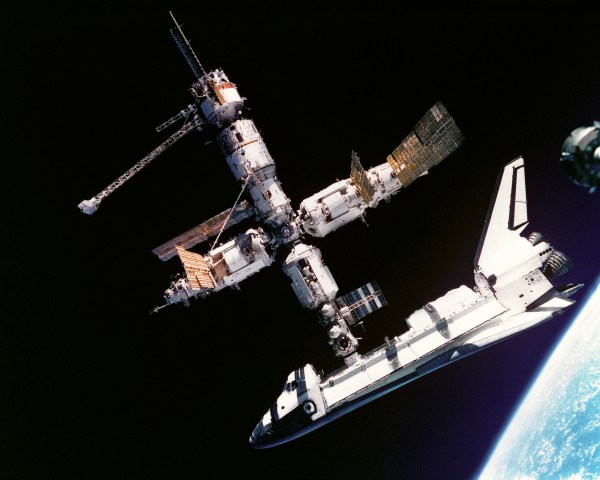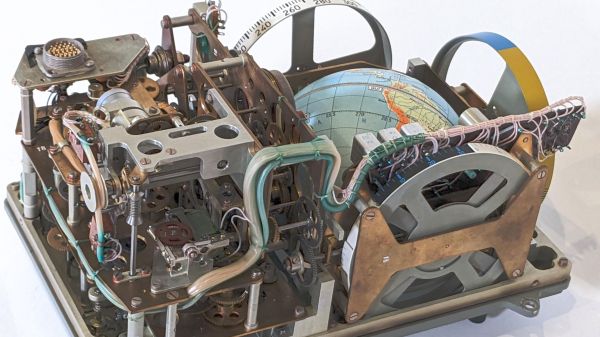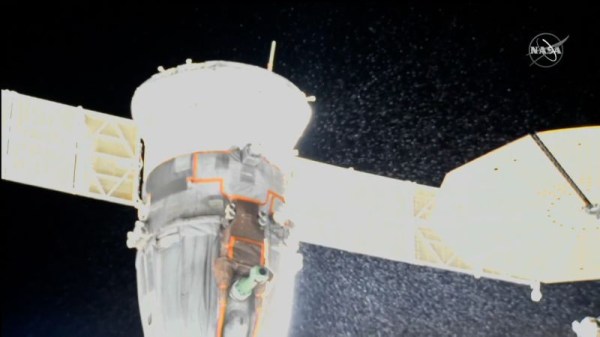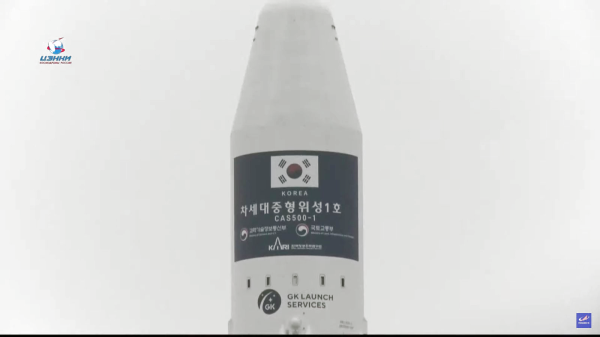We stumbled upon a story this week that really raised our eyebrows and made us wonder if we were missing something. The gist of the story is that U.S. Secretary of Energy Chris Wright, who has degrees in both electrical and mechanical engineering, has floated the idea of using the nation’s fleet of emergency backup generators to reduce the need to build the dozens of new power plants needed to fuel the AI data center building binge. The full story looks to be a Bloomberg exclusive and thus behind a paywall — hey, you don’t get to be a centibillionaire by giving stuff away, you know — so we might be missing some vital details, but this sounds pretty stupid to us.
Soyuz18 Articles
The Apollo–Soyuz Legacy Lives On, Fifty Years Later
On this date in 1975, a Soviet and an American shook hands. Even for the time period, this wouldn’t have been a big deal if it wasn’t for the fact that it happened approximately 220 kilometers (136 miles) over the surface of the Earth.
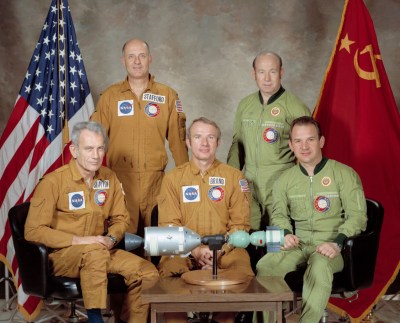
Although their spacecraft actually launched a few days earlier on the 15th, today marks 50 years since American astronauts Thomas Stafford, Vance Brand, and Donald “Deke” Slayton docked their Apollo spacecraft to a specifically modified Soyuz crewed by Cosmonauts Alexei Leonov and Valery Kubasov. The two craft were connected for nearly two days, during which time the combined crew was able to freely move between them. The conducted scientific experiments, exchanged flags, and ate shared meals together.
Politically, this very public display of goodwill between the Soviet Union and the United States helped ease geopolitical tensions. On a technical level, it not only demonstrated a number of firsts, but marked a new era of international cooperation in space. While the Space Race saw the two counties approach spaceflight as a competition, from this point on, it would largely be treated as a collaborative endeavour.
The Apollo–Soyuz Test Project lead directly to the Shuttle–Mir missions of the 1990s, which in turn was a stepping stone towards the International Space Station. Not just because that handshake back in 1975 helped establish a spirit of cooperation between the two space-fairing nations, but because it introduced a piece of equipment that’s still being used five decades later — the Androgynous Peripheral Attach System (APAS) docking system.
Continue reading “The Apollo–Soyuz Legacy Lives On, Fifty Years Later”
One Giant Steppe For Space Flight
In a recent photo essay for the New Yorker magazine, author Keith Gessen and photographer Andrew McConnell share what life is like for the residents around the launch facility and where Soyuz capsules land in Kazakhstan.
Read the article for a brief history of the Baikonur spaceport and observations from the photographer’s fifteen visits to observe Soyuz landings and the extreme separation between the local farmers and the facilities built up around Baikonur. A local ecologist even compares the family farmers toiling around the busy spaceport to a scene our readers may be familiar with on Tatooine.
The Soviet Space Station Program: From Military Satellites To The ISS
When the Space Race kicked off in earnest in the 1950s, in some ways it was hard to pin down where sci-fi began and reality ended. As the first artificial satellites began zipping around the Earth, this was soon followed by manned spaceflight, first in low Earth orbit, then to the Moon with manned spaceflights to Mars and Venus already in the planning. The first space stations were being launched following or alongside Kubrick’s 2001: A Space Odyssey, and countless other books and movies during the 1960s and 1970s such as Moonraker which portrayed people living (and fighting) out in space.
Perhaps ironically, considering the portrayal of space stations in Western media, virtually all of the space stations launched during the 20th century were Soviet, leaving Skylab as the sole US space station to this day. The Soviet Union established a near-permanent presence of cosmonauts in Earth orbit since the 1970s as part of the Salyut program. These Salyut space stations also served as cover for the military Almaz space stations that were intended to be used for reconnaissance as well as weapon platforms.
Although the US unquestionably won out on racing the USSR to the Moon, the latter nation’s achievements granted us invaluable knowledge on how to make space stations work, which benefits us all to this very day.
Continue reading “The Soviet Space Station Program: From Military Satellites To The ISS”
Inside Globus, A Soviet-Era Analog Space Computer
Whenever [Ken Shirriff] posts something, it ends up being a fascinating read. Usually it’s a piece of computer history, decapped and laid bare under his microscope where it undergoes reverse engineering and analysis to a degree that should be hard to follow, but he still somehow manages to make it understandable. And the same goes for this incredible Soviet analog flight computer, even though there’s barely any silicon inside.
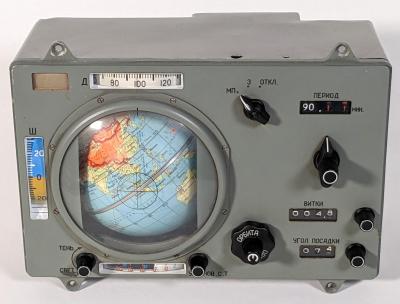 The artifact in question was officially designated the “Индикатор Навигационный Космический,” which roughly translates to “space navigation indicator.” It mercifully earned the nickname “Globus” at some point, understandable given the prominent mechanized globe the device features. Globus wasn’t actually linked to any kind of inertial navigation inputs, but rather was intended to provide cosmonauts with a visual indication of where their spacecraft was relative to the surface of the Earth. As such it depended on inputs from the cosmonauts, like an initial position and orbital altitude. From there, a complicated and absolutely gorgeous gear train featuring multiple differential gears advanced the globe, showing where the spacecraft currently was.
The artifact in question was officially designated the “Индикатор Навигационный Космический,” which roughly translates to “space navigation indicator.” It mercifully earned the nickname “Globus” at some point, understandable given the prominent mechanized globe the device features. Globus wasn’t actually linked to any kind of inertial navigation inputs, but rather was intended to provide cosmonauts with a visual indication of where their spacecraft was relative to the surface of the Earth. As such it depended on inputs from the cosmonauts, like an initial position and orbital altitude. From there, a complicated and absolutely gorgeous gear train featuring multiple differential gears advanced the globe, showing where the spacecraft currently was.
Those of you hoping for a complete teardown will be disappointed; the device, which bears evidence of coming from the time of the Apollo-Soyuz collaboration in 1975, is far too precious to be taken to bits, and certainly looks like it would put up a fight trying to get it back together. But [Ken] still manages to go into great depth, and reveals many of its secrets. Cool features include the geopolitically fixed orbital inclination; the ability to predict a landing point from a deorbit burn, also tinged with Cold War considerations; and the instrument’s limitations, like only supporting circular orbits, which prompted cosmonauts to call for its removal. But versions of Globus nonetheless appeared in pretty much everything the Soviets flew from 1961 to 2002. Talk about staying power!
Sure, the “glass cockpit” of modern space vehicles is more serviceable, but just for aesthetics alone, we think every crewed spacecraft should sport something like Globus. [Ken] did a great job reverse-engineering this, and we really appreciate the tour. And from the sound of it, [Curious Marc] had a hand in the effort, so maybe we’ll get a video too. Fingers crossed.
Thanks to [saintaardvark] for the tip.
Damaged Soyuz May Leave Crew Without A Ride Home
Though oddly beautiful in its own way, it’s a sight no astronaut wants to see: their spacecraft, the only way they have to return to Earth, ejecting countless iridescent droplets of something into space.
When the crew of Apollo 13 saw their craft literally bleeding out on their trip to the Moon it was clear the mission, and ultimately their lives, were in real jeopardy. Luckily the current situation is not nearly as dire, as the leaking Soyuz MS-22 spacecraft docked to the International Space Station doesn’t pose any immediate danger to those aboard the orbiting laboratory. But it’s still an unprecedented situation, and getting its crew home will require engineers on the ground to make some very difficult decisions.
This situation is still developing, and neither NASA nor their Russian counterpart Roscosmos have released much in the way of specifics. But we can make some educated guesses from the video and images we’ve seen of the stricken Soyuz capsule, and from what’s been shown to the public so far, things aren’t looking good.
Continue reading “Damaged Soyuz May Leave Crew Without A Ride Home”
South Korean Mapping Satellite Reaches Orbit
South Korea’s space program achieved another milestone yesterday with the launch of the first Compact Advanced Satellite 500 (CAS500) in a planned series of five vehicles. A second-generation Russian Soyuz 2.1a lifted the Korean-made CAS500-1 from historic Baikonur Cosmodrome in southern Kazakhstan and successfully placed it into a 500 km sun-synchronous orbit, inclined by 97.7 degrees or 15 orbits/day. Living up to its reputation as a workhorse, the Soyuz then proceeded to deposit multiple other satellites into 600 km and 550 km orbits. The satellite is pretty substantial, being 2.9 m tall and 1.9 m diameter and topping the scales at 500 kg. (Don’t be confused, like we were, by this Wikipedia article that says it is a 1.3 kg CubeSat.)

South Korea already has over a dozen satellites in orbit, and the CAS500 adds a modular space platform to the mix. It was designed by the Korea Aerospace Research Institute (KARI) to provide a core backbone which can be easily adapted to other missions, not unlike a car manufacturer that sells several different models all based on the same underlying chassis. Another down-to-earth goal of the CAS500 program was to foster the transfer of core technologies from state-owned KARI to private industry. We wonder how such figures are calculated, but reportedly 91.3% of CAS500-1 was made in Korea. Subsequent flights will further involve local services and industry.
The purpose of the first two satellites is to provide images to the private sector, for example, online mapping and navigation platforms. How popular this will be is yet to be determined — as one local newspaper notes, the 2 meter image resolution (50 cm in monochrome) pales in comparison to Google’s advertised 15 cm resolution. The next three satellites will focus on space science imagery.
The Soyuz launch is shown below, and this short video clip from KARI shows a nice animation of the satellite. Try not to cringe at the simulated whooshing sound as two satellites pass each other in the vacuum of space — turn down the volume if you need to.
Continue reading “South Korean Mapping Satellite Reaches Orbit”




